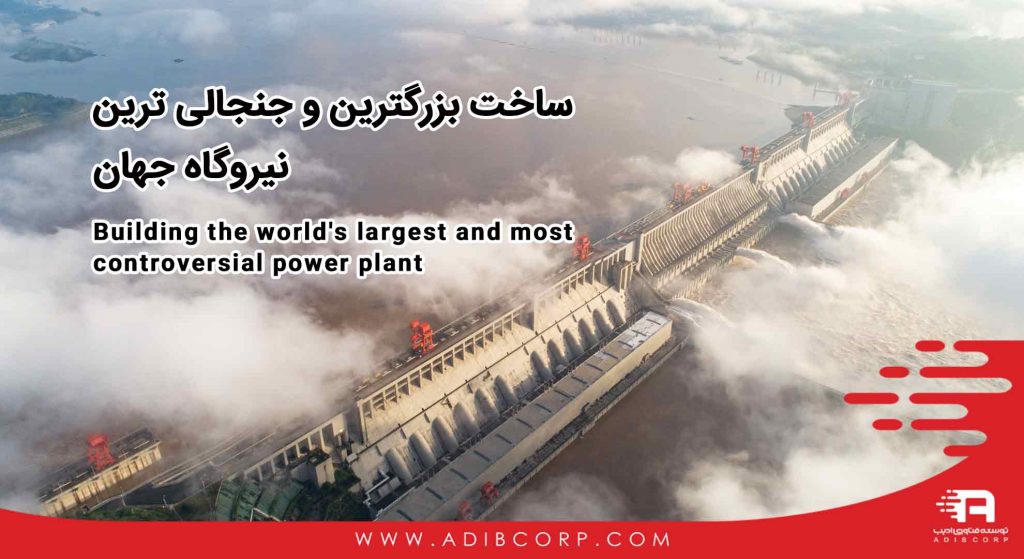In 2018, a single power plant produced more energy than the world’s largest coal-powered and gas-powered plants combined. And rather than using finite fossil fuels, this massively powerful plant relied on a time-tested source of renewable energy: running water. Stretching over 2.3 kilometers, China’s Three Gorges Dam isn’t just the world’s largest hydroelectric plant. It’s capable of producing more energy than any other power plant on Earth. So what allows Three Gorges to generate all this power? And how do hydroelectric plants work in the first place?
A hydroelectric dam is essentially a massive gate, which redirects a river’s natural flow through a large pipe called a penstock. Rushing water flows through the penstock and turns the blades of a turbine, which is attached to a generator in an adjacent power station. The turning of the blades spins coils of wire inside a magnetic field, producing a steady supply of electricity.
Because the penstocks can be sealed at any time, a dam can hold back excess water during stormy seasons, and save it for dry ones. This allows hydroelectric dams to produce power regardless of the weather, while simultaneously preventing floods further downstream.
These benefits have long appealed to China’s Hubei Province. Located near the basin of the Yangtze River, this region is prone to deadly floods during rainy seasons when the Yangtze’s flow is strongest. Plans to build a dam that would transform this volatile waterway into a stable source of power circulated throughout the 20th century. When construction finally began in 1994 the plans were epic. The dam would contain 32 turbines— 12 more than the previous record holder, South America’s Itaipu Dam. The turbines would supply energy to two separate power stations, each connecting to a series of cables spanning hundreds of kilometers. Electricity from Three Gorges would reach power grids as far away as Shanghai.
However, the human costs of this ambition were steep. To create the dam’s reservoir, workers needed to flood over 600 square kilometers of land upstream. This area included 13 cities, hundreds of villages, and over 1,000 historical and archaeological sites. The construction displaced roughly 1.4 million people, and the government’s relocation programs were widely considered insufficient. Many argued against this controversial construction, but others estimated that the lives saved by the dam’s flood protection would outweigh the trauma of displacement. Furthermore, raising the water level upstream would improve the river’s navigability, increase shipping capacity, and transform the region into a collection of prosperous port towns.
When the project was completed in 2012, China became the world’s largest producer of electricity. In 2018, the dam generated 101.6 billion kilowatt-hours. That’s enough electricity to power nearly 2% of China for one year; or to power New York City for almost two years. This is a truly astonishing amount of energy. And yet, two years earlier, another dam less than half the size actually generated more electricity. Despite Three Gorges record-setting scale, the Itaipu Dam still produced more power.
To understand why Itaipu can outperform Three Gorges, we need to look at the two factors that determine a dam’s energy output. The first is the number of turbines. Three Gorges has the world’s highest installed turbine capacity, meaning it’s theoretically capable of producing over 50% more power than Itaipu. But the second factor is the force and frequency of water moving through those turbines. Three Gorges spans several deep, narrow ravines surging with powerful water. However, the Yangtze’s seasonal changes keep the dam from reaching its theoretical maximum output. The Itaipu Dam, on the other hand, is located atop what was previously the planet’s largest waterfall by volume. Although the dam’s construction destroyed this natural wonder, the constant flow of water allows Itaipu to consistently generate more power each year.
This dam rivalry is far from over, and other projects like the Inga Falls Dam in the Democratic Republic of Congo are also vying for the title of most powerful power plant. But whatever the future holds, governments will need to ensure that a power plant’s environmental and human impact are as sustainable as the energy it produces.



